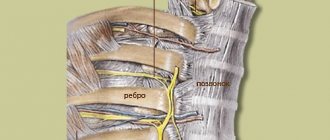On the one hand, technological progress has greatly simplified our lives, but on the other hand, year after year it inexorably disrupts our natural biorhythms.
It is especially difficult for residents of megacities to fall asleep on time, since in large cities the night light is so bright that it is almost impossible to find yourself in complete darkness, which is necessary for proper sleep.
According to statistics, 50% of the world’s adult population suffers from sleep disorders, and children and adolescents are increasingly at risk.
Breathing technique for sleep 4-7-8
Every day we are bombarded with information attacks from all sides, as a result our brain is overloaded and our mind is constantly busy with all sorts of thoughts. Therefore, to quickly fall asleep and get quality sleep, it is vital to learn how to relieve psycho-emotional stress and stop the thought process.
Our breathing will help us with this. More precisely, the 4-7-8 breathing technique, developed by Andrew Weil, MD, of Harvard.
This breathing practice is based on the ancient practice of Pranayama (link to article st 0001) and is controlled breathing according to a certain pattern.
Deep, slow breathing during practice activates the parasympathetic nervous system, whose task is to reduce stress and mental anxiety.
The author of this breathing technique called his method “a natural tranquilizer for the nervous system.”
The benefits of breathing exercises for healthy sleep
Proper breathing and normal, healthy, deep sleep have a direct connection. This explains the difficulty of falling asleep in a room with hot or dry air, against the background of overexcitation, after vigorous physical activity. Under the influence of all these factors, oxygen starvation develops in the brain tissue, which does not allow the organ to switch off and rest.
If you learn to breathe correctly, you can speed up the process of restoring tissue respiration, as well as minimize the negative consequences of hypoxia.
The results of using breathing exercises to get rid of insomnia:
- increasing the functionality of the respiratory tract, relieving the symptoms of chronic respiratory pathologies;
- stimulation of blood circulation and cerebral metabolism, saturation of nervous tissue with oxygen, its cleansing of toxins;
- elimination of muscle spasms and pain;
- reduction of emotional stress, elimination of the effects of mental fatigue, stabilization of the central nervous system;
- strengthening the immune system;
- reducing the risk of development and/or progression of chronic diseases of the heart, blood vessels, gastrointestinal tract, and endocrine glands.
Breathing techniques slow down the progression of chronic heart diseases.
First of all, breathing exercises help not only to quickly calm down, but also to distract from unpleasant memories and obsessive thoughts with a negative connotation. All these factors force the brain to continue working even after going to bed, preventing the body from falling asleep.
Breathing technique for falling asleep quickly or how to fall asleep in 60 seconds?
At first, it is best to practice while sitting. When you master this breathing technique well, you will be able to perform it lying down, standing, and even while walking.
- Sit so that your back is straight and your feet touch the floor.
- Place the tip of your tongue on the tubercle of the upper palate and keep it there throughout the practice.
- Take a deep breath in through your nose and exhale through your mouth, completely emptying your lungs of air, maintaining the position of your tongue on the upper palate.
- Take a deep breath in through your nose for 4 counts.
- Then hold your breath for 7 counts.
- Exhale through your mouth for 8 counts.
This is one breathing cycle, you need to do 4 such cycles in total.
This breathing method can be done anytime and anywhere as it does not take much time and does not require special training or additional equipment.
You can count faster or slower, the main thing is to maintain the proportion 4-7-8.
For the first month of training, we recommend doing this exercise 2 times a day, no more than four breathing cycles. Then you can increase to 8 cycles.
Regular practice will help improve digestion, normalize blood pressure, relieve anxiety and even stop a panic attack.
Breathing exercises before bed
It is better to accustom your body to these types of effects gradually, ultimately choosing one leading technique. The remaining exercises will become auxiliary, strengthening, if necessary, a not very lasting result.
It is better to accustom your body using therapeutic techniques gradually.
Breathing techniques that are effective for insomnia:
- calming - breathing in which only the stomach is involved, and the chest remains motionless. To relieve tension and relax, it is enough to take 5-7 breaths in and out at a very slow pace;
- full – lie on your back, exhale completely. Start slowly inhaling air through your nose, first filling your stomach, then your chest. At the final stage, lift the collarbones to allow some more air to enter. Then do the same complete exhalation, working in the opposite direction from the collarbones to the abdomen. Gymnastics for insomnia involves up to 7 repetitions;
- anti-stress – a relaxing modification of “full breathing”, in which the exercise is complemented by the pronunciation of a hissing sound as you exhale. At this moment, you need to imagine all the negativity that “comes out” of the body with a hiss;
- counting to 10 - you need to pronounce the numbers from 1 to 10 to yourself, inhaling on the odd numbers and exhaling on the even ones. It’s not enough to just breathe and count; you need to skillfully name the numbers, drawing them in your imagination, performing deep breathing movements, completely surrendering to the activity.
One technique involves making a hissing sound as you exhale.
If at some point a failure occurs, everything must be started over. You should close your eyes with your palms, try to relax, and then start doing gymnastics again.
4-7-8 breathing: benefits
This breathing practice can be used not only before bed, but also in moments of nervous tension and stressful situations. When we are anxious or scared, our breathing quickens, causing the level of adrenaline in our blood to increase. Holding your breath and exhaling slowly slows your heart rate, so 4-7-8 breathing works as a sedative.
During practice, all attention is directed to the process of breathing and counting; this calms the central nervous system and normalizes the pulse, as a result of which the feeling of anxiety decreases and clarity of thought occurs.
This breathing technique helps curb your appetite and improve digestion. So, if you have a goal to lose weight, be sure to include this breathing technique in your daily workouts.
Tangible results of practice are noticeable after 3-5 weeks.
Breathing technique for falling asleep
If you have persistent problems falling asleep, the 4-7-8 sleep breathing system comes to the rescue. The author of the 4-7-8 technique is Dr. Andrew Weil. Many patients confirm that his breathing exercises allow them to fall asleep quickly. People start dozing off within a minute.
The 4-7-8 breathing technique does not require the use of medications or the creation of special lighting in the bedroom. Breathing exercises serve as a natural sedative for the nervous system and help remove the harmful effects of daily stress.
The 4-7-8 technique helps to completely saturate the body with life-giving oxygen. The process of oxygen enrichment helps relax muscles, relieves stress on the psyche, and as a result, helps you fall asleep much faster and more peacefully.
The basis of proper breathing was taken from the practices of Indian yogis, who paid great attention to relaxation and concentration on breathing exercises.
Weil's technique is characterized by complete control over breathing, dividing it into phases of powerful inhalation, long exhalation and the necessary suspension of breathing.
Many aspects of our daily life depend on how well we breathe. These include:
- creative, thought processes;
- state of the immune system;
- rhythms, mood swings;
- blood pressure indicator.
When a person is nervous or under severe stress, his breathing becomes shallow, and the upper part of the chest is involved in the breathing process. This intermittent, superficial process promotes the synthesis of stress hormones, adrenaline.
A strong nervous shock leads to oxygen depletion; the body is not provided with the required amount of oxygen during shallow breathing.
Features of the Weil technique
The technique developed by Dr. Weil uses slow, deep breaths as a tool to calm the central nervous system. The main stages of Vail gymnastics:
- An intense breath in deeply is designed to fill the lungs with air, and not just part of the upper sections. This filling guarantees a full flow of oxygen and leads to a calming effect on the body.
- Brief interruptions in breathing slow down your heart rate. This stage helps the best absorption of oxygen in the blood.
- Exhaling for a long time can remove large amounts of carbon dioxide from the body. Simultaneously with exhalation, the body muscles gradually relax.
- By focusing his attention on the rhythm of the exercises, a person is automatically distracted from future worries.
Practicing 4-7-8 calms the mind. When performing exercises, you have to constantly count and concentrate on breathing control. In these moments, the feeling of anxiety will subconsciously disappear, the nervous system will stabilize. In terms of speed and force of impact, this phenomenon resembles local anesthesia.
This technique is used when:
- sleep does not come for a long time;
- waking up in the middle of the night and unable to fall asleep;
- you need to reduce your appetite;
- a feeling of unconscious anxiety appears;
- with severe nervous disorder in any everyday situation.
By systematically performing these exercises, after a month you can see favorable results:
- clarity of thoughts;
- moderate relaxation in the right situation;
- stable pulse and normalization of blood pressure;
- general improvement in the condition of the body.
Important! Eliminating mental stress using the 4-7-8 technique interrupts anxiety reactions in the body, reduces the release of stress hormones and equalizes their harmful effects.
The dangers of lack of sleep
Each of us wants to be healthy and stay young as long as possible. But not everyone understands that this requires quality sleep. And sleep at night, because only in sleep and only in the dark is the necessary portion of melatonin produced.
Many people would be happy to go to bed early, but they can’t; their active brain doesn’t allow them to fall asleep, replaying the events of the past day, meetings, conversations before their eyes... Breathing according to the 4-7-8 pattern will help you quickly calm your mind, relax and fall asleep effortlessly.
Lack of sleep can lead to:
- Failure in all organs and systems
- CNS depression
- Paranoia
- Diabetes mellitus
- Deterioration of brain function and memory
- Premature aging
- Obesity
- Osteoporosis
- Dementia
If you have trouble falling asleep, be sure to try the 4-7-8 breathing technique according to Dr. Andrew Weiss.
A little about the causes and consequences of dream disorder
Doctors teach us to perceive sleep as a way to replenish the body's reserves after a busy day of work. Health, youth, and life expectancy depend on its quality and duration.
More than half of our planet's population has problems getting a good night's rest, and insomnia troubles every tenth person. The capitalization of society and its technical development often lead to violations of a healthy lifestyle. To achieve professional success, many people sacrifice proper rest for the sake of a business career.
Systematic lack of sleep has a negative impact on appearance. Frightening pallor, swollen eyes, drooping lip folds - all these are signs of chronic lack of sleep.
It's funny, but a sleep-deprived person can give the impression of a drunk person. The patient's behavior after 18 hours of wakefulness is symmetrical to the model of a slightly drunk individual.
Intermittent, short-term sleep impairs creative activity; the individual simply does not find new solutions. Symptoms of fragmented memory impairment reduce the overall quality of professional and personal life.
Medical research has shown that constant lack of sleep creates irreversible processes that lead to increased mortality.
Important! For good health, you need quality, long sleep. When falling asleep, you need to relax, putting aside all your daytime experiences.
The required amount of good sleep reduces nervous tension and stress that arises during the day.
To enhance the effect
The effectiveness of gymnastics will increase if, simultaneously with its implementation, you influence the causes of insomnia, taking into account the principles of sleep hygiene. Important points are: adherence to a daily routine, proper nutrition, comfortable sleeping place, giving up bad habits. An additional positive factor will be the use of aromatherapy techniques.
To relax and make it easier to fall asleep, just rub a drop of lavender ether diluted in vegetable oil into your temples.
Stretching will relieve muscle tension. The main thing is not to choose too active exercises and devote no more than 5 minutes to gymnastics. From a standing position with your feet together, just stretch your arms up, slightly arching your back and throwing your head back. At the same time, each muscle should tense, after which you can return to the starting position. After this, it is recommended to lie on your back, raise both legs to the wall, lift your pelvis from the horizontal surface and again tense your whole body for a few seconds.
After training, you need to lie on your back and raise both legs to the wall.









